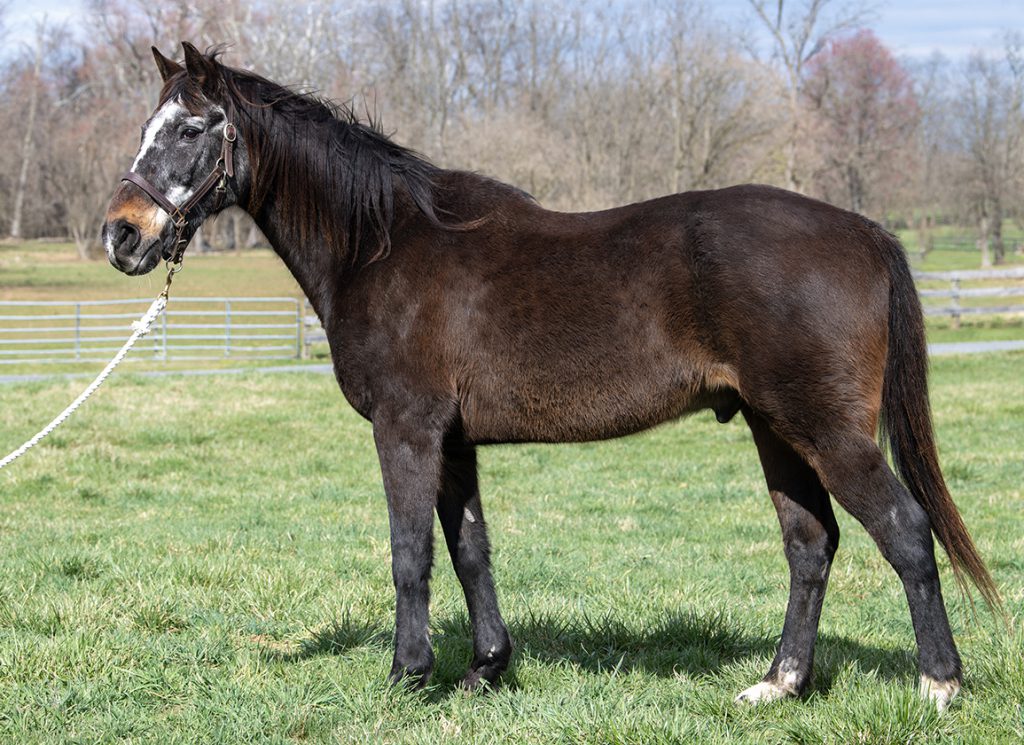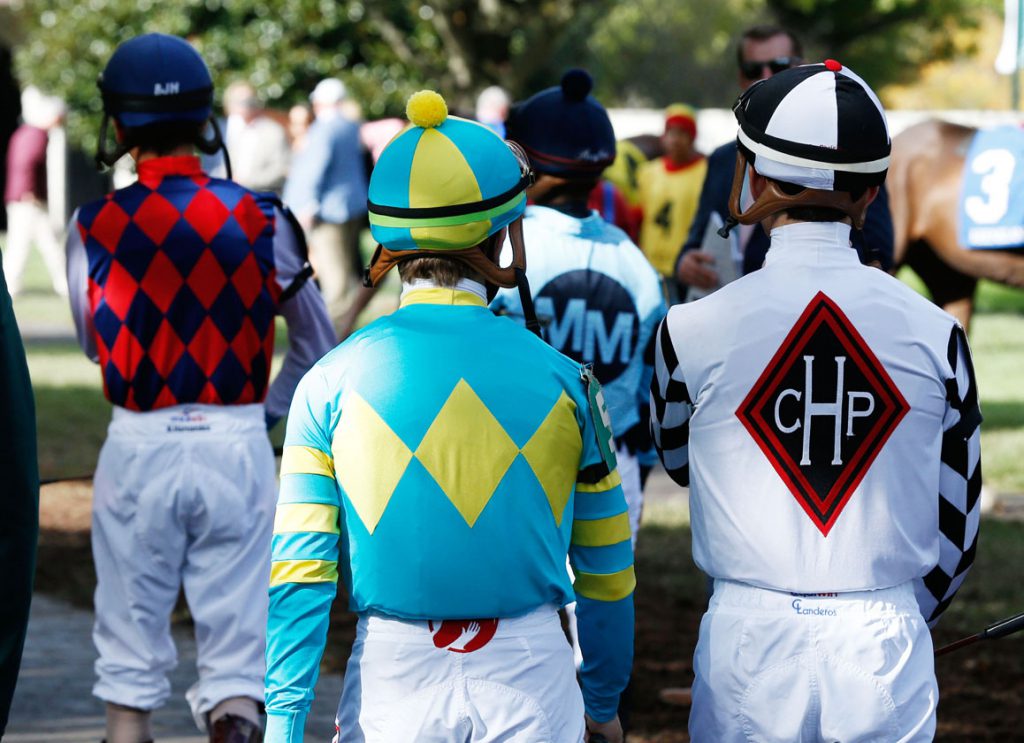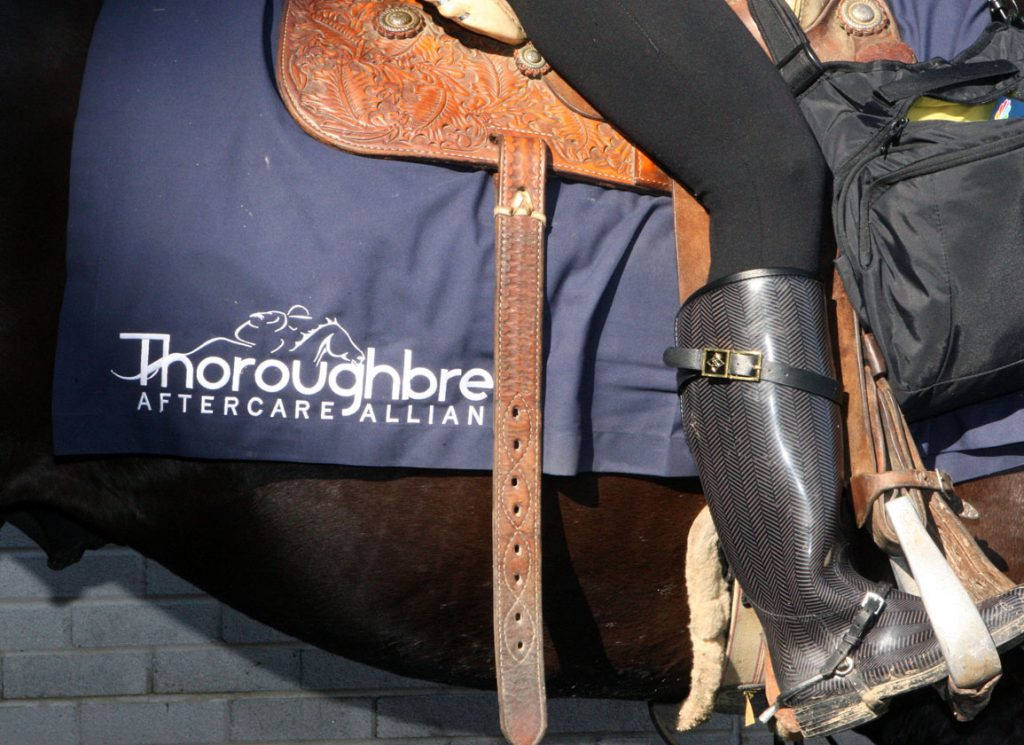To look at him and to watch him, you would never know that New Years Eve (Night Conqueror) is, well, ancient. He's holding his weight and he still manages to run around his paddock when the mood strikes him.
“He's doing amazingly well,” said his owner, Julie Izzo. “But he has slowed down a bit.”
Of course he has. He's 38.
As New Years Eve crept into his mid-thirties Izzo, who resides in Pennsylvania, began to do some research. Was there an older Thoroughbred out there? She has asked around, checked social media and touched base with Daily Racing Form photographer Barbara Livingston, who has looked high and far for an even older horse. As best as Izzo can tell, the horse she calls Axl (Izzo is a big Guns N' Roses fan) is in fact the oldest former race horse in the U.S.
“I found some people who claimed they had older horses, but when I asked for their Jockey Club names they disappeared or their horse wasn't a race horse,” Izzo said. “Barbara said that this has been a passion of hers for 25 years and she didn't know of an older horse. One lady said her horse was a day older. I asked what was the horse's Jockey Club name because I wanted to see if her horse and mine had ever been to the same tracks. She also disappeared on me.”
New Years Eve was born on March 17, 1986. His career was about as unexceptionable as it gets. He debuted on June 9, 1989 at the Nebraska racetrack Atokad Park. He ran 18 times, won two races and earned the grand total of $3,140.
None of which mattered to Izzo, who was looking for a pleasure horse and bought the gelding in 1993 when he was seven.
“He was literally my dream come true,” Izzo said. “My mother had a horse when I was born and she put me on a horse before I could walk. All I ever wanted was my own horse. I rode in stables during my childhood and teen years. But I was always riding other people's horses. My dream was to have a big bay Thoroughbred. In my brain, it had to be a big bay Thoroughbred. An ad popped up advertising him for sale and I knew, before I even saw him, that I was buying him. OTTBs (off the track thoroughbreds), they have always been my passion. I just love them. I love the fire. I love the power. I wanted a horse that was going to be fun and exciting and one where I wouldn't know what I was getting into every day. He was always that.”
Izzo never tried to turn New Years Eve into a show horse. She was happy to just have him around and to be able to ride him whenever she wanted.
“He's never been in a show,” she said. “All I ever wanted was to have a horse where I could just go out and have some fun with them. I have done some trail riding and some light dressage with him. He loves to jump. Two years ago, he took off on a dead run in the pasture and decided to jump all the wild rose bushes. He will take himself jumping. He loves to jump.”
That Julie Izzo owns what may be the oldest living Thoroughbred in the U.S. probably isn't a coincidence. She also owned a Quarter Horse mare who lived to be 40. She believes the key to a horse having a long life is to keep them out of a stall.
“Since I bought him, he has almost always been pasture boarded,” she said. “I do not believe in keeping horses in stalls. I think it is a horrible thing to do to them. He was always pretty much out in the pasture as much as possible. If you put them in a box and they are standing still trying to eat that means you're affecting their digestive system and you're affecting their respiratory system because they are stuck in a dusty building. It's not good for a horse mentally to be stuck in a box all day.”
Then there is his diet. Izzo is careful about what she feeds her horses.
“He went from eating a low protein sweet feed and having free access to hay,” she said. “Now, we've converted him over to Sentinel Senior. It's easier for him to digest. Like any horse at his age, he's starting to lose teeth. In fact, we're on the fence about starting to do some major extractions. Up until two or three years ago, he ate dry pellets and had access to all the grass he could eat. Now he gets a mash because his teeth have gotten bad enough where he's not going to be able to keep eating grass. He gets a mash twice a day with alfalfa cubes, Sentinel Senior and a couple of low-carb horse cookies that I throw in there. Plus, we give him a high-quality probiotic.
“I did a lot of research about their diets and read all the educational materials Cornell put out and have read books by people who know what they are talking about. People ask me all the time, what do you feed him? I tell them the feed is just one part of it. Obviously, genetics play a big factor and so does keeping him out of a stall.”
The only problem of late has been that Axl is alone after having the Quarter Horse mare as his pasture mate for 28 years.
“Sometimes I think he is lonely,” Izzo said.
But he keeps going, year after year. And while it can't last forever, Izzo continues to marvel at how healthy and spry her horse is. He might have a few more years left in him. From a horse who is special in his own unique way, you never know.
The post The World’s Oldest Thoroughbred? We Think We Have Found Him appeared first on TDN | Thoroughbred Daily News | Horse Racing News, Results and Video | Thoroughbred Breeding and Auctions.






